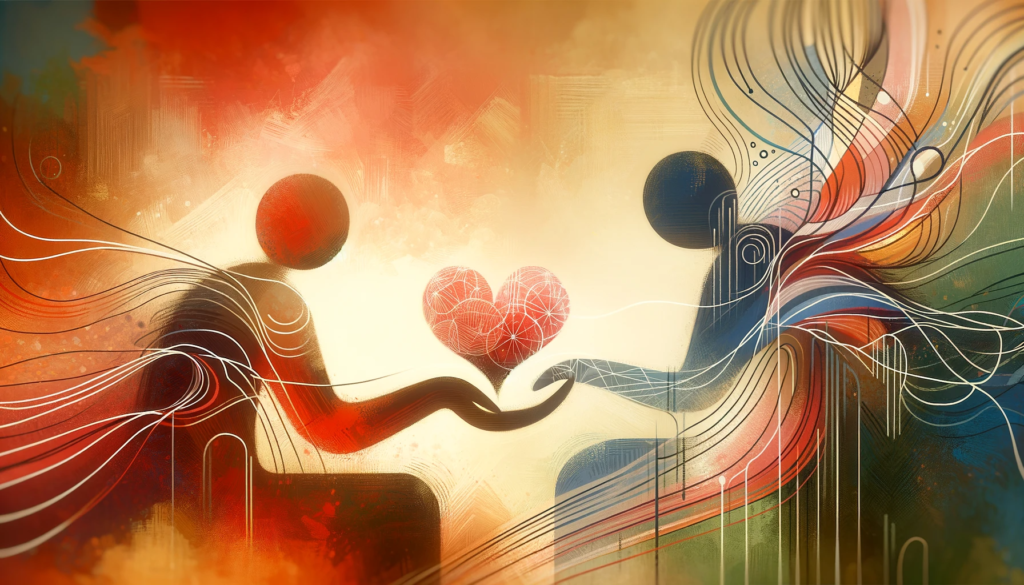Understanding The Emotion of Sadness: What Are The Events That Trigger Sadness and Hopelessness?
In our journey to understand the emotion of sadness, it’s crucial to break free from societal norms that discourage the expression of such feelings. Sadness, often viewed as an uncomfortable or undesirable emotion, holds significant value in our emotional landscape. We aim to explore the nuances of sadness, providing insights into its triggers, variations, and ways to cope with it.
The Spectrum of Sadness
Sadness is a multifaceted emotion with a spectrum that extends far beyond a singular feeling of unhappiness. This complexity often goes unrecognized, yet understanding it is crucial for emotional health. In this section, we explore the spectrum of sadness, highlighting its various forms and intensities. From the quiet pangs of disappointment to the overwhelming waves of grief, each variation of sadness has its own unique characteristics and impacts. By examining this spectrum, we aim to foster a deeper, more nuanced appreciation and understanding of the emotional landscape of sadness.
More Than Just Feeling Blue
Sadness is not a monolithic emotion; it presents itself in various forms, such as despair, grief, disappointment, loneliness, and even melancholy. Each variation speaks to a different aspect of sadness, offering insight into the multifaceted nature of this often misunderstood feeling.

Unraveling the Triggers of Sadness
In our journey to understand sadness, a critical step is identifying the triggers that spark this emotion. Sadness can stem from several sources, ranging from tangible losses to subtle shifts in our life experiences. Let’s unravel these triggers, shedding light on the diverse circumstances and events that can evoke feelings of sadness. By comprehensively exploring these catalysts, we gain a deeper understanding of how sadness manifests in our lives, paving the way for more effective coping and emotional resilience.
Loss and Beyond
Sadness can be triggered by a multitude of events. The loss of a loved one, either through death or separation, ranks high among these triggers. However, sadness is not exclusive to loss. It can also stem from unmet expectations, changes in personal circumstances, or even a general sense of disconnection from others.
The Role of Unfulfilled Expectations
Often, the disparity between our expectations and reality can lead to feelings of sadness. Whether it’s a career path that doesn’t pan out as hoped, a relationship that falls short of our ideals, or any other instance where reality fails to align with our desires, these experiences can profoundly impact our emotional well-being.
DISCOVER: Effective Strategies For Everyday Anxiety
Internal Factors Intensifying Sadness
In exploring the depths of sadness, it’s important to consider not just the external events that trigger this emotion but also the internal factors that can intensify it. Our beliefs, thoughts, and perceptions play a pivotal role in shaping our experience of sadness. These internal dialogues often magnify our emotional responses, making it crucial to understand and address them. In this section, we delve into the various internal factors that contribute to deepening the feeling of sadness, exploring how our inner narratives can either exacerbate or alleviate this complex emotion.

Beliefs That Shape Our Emotions
Our internal dialogue plays a significant role in how we experience sadness. Beliefs about permanent separation, hopelessness, or personal inadequacies can amplify our sadness. These internal narratives are critical to understand and address, particularly in a therapeutic setting.
The Physicality of Sadness
The impact of sadness is not confined to our emotional state; it also manifests physically in various ways. Let’s take a moment to dive into the physicality of sadness, exploring how this emotion can affect our bodies. From the tears that accompany a deep sense of loss to the fatigue that shrouds us in times of melancholy, the physical symptoms of sadness are as real and significant as the emotional ones. Understanding these physical manifestations is crucial for a holistic approach to managing and acknowledging sadness, offering insights into how our bodies and minds are intrinsically linked in emotional experiences.
Bodily Responses to Emotional Pain
Sadness is not just an emotional experience; it manifests physically. Symptoms can include crying, a sense of emptiness, lethargy, and even physical aches. Recognizing these physical signs is essential in understanding and validating our emotional experiences.
TRENDING: Overcoming Anxiety Sensitivity

Behavioral Expressions of Sadness
Sadness, as an emotion, not only affects our internal state but also influences our external behaviors. From withdrawal from social engagements to a noticeable slowdown in daily activities, sadness can significantly impact how we conduct ourselves. Recognizing and understanding these behavioral changes are vital in comprehending the full scope of sadness, aiding in both personal coping and providing support to others experiencing this complex emotion.
Withdrawal and Avoidance
Behaviorally, sadness can lead to withdrawal from social situations, avoidance of activities that once brought joy, and a general slowing down in our daily routines. These actions are often protective mechanisms, helping us cope with the emotional weight of sadness.
Prolonging the State of Sadness
In understanding sadness, it’s essential to recognize not just its onset and immediate effects, but also how certain behaviors and thought patterns can prolong its presence in our lives. Let’s focus on the ways in which we might inadvertently extend our experience of sadness. Whether through dwelling on past events, engaging in activities that echo our melancholic mood, or nurturing negative thought cycles, these actions can keep us entrenched in a state of sadness longer than necessary. By identifying and addressing these patterns, we can develop strategies to more effectively navigate through and emerge from periods of sadness.
The Cycle of Emotion
After experiencing sadness, we might engage in activities that inadvertently prolong this state. Listening to sad music, ruminating on past regrets, or focusing on negative aspects of our lives can keep us in a cycle of sadness. Understanding this tendency is key to managing our emotional health.
FREE TRAINING: How To Overcome Your Battle With Anxiety

Navigating Through Sadness
Navigating through sadness is a crucial aspect of managing our emotional health. I want to explore effective strategies and approaches for dealing with sadness. It’s about understanding how to acknowledge and process this emotion in a healthy way, rather than avoiding or suppressing it. Whether it’s through self-reflection, seeking support from others, or employing coping mechanisms, we’ll delve into various methods that can assist in moving through periods of sadness with resilience and mindfulness. The goal is to equip readers with the tools and insights needed to face sadness constructively and emerge with a deeper understanding of themselves and their emotional landscape.
Healthy Approaches to Coping
Dealing with sadness in healthful ways involves acknowledging and expressing the emotion rather than suppressing it. Journaling, talking to trusted individuals, or engaging in therapy can be effective ways to process sadness. It’s important to remember that sadness, like all emotions, serves a purpose and can lead to growth and deeper understanding.
The Social Aspect of Sadness
The experience of sadness, while deeply personal, also has a significant social dimension. Sadness can be a shared experience, fostering empathy and deeper connections between individuals. By examining how expressing and discussing our sadness can lead to communal support and understanding, we aim to highlight the importance of social dynamics in coping with and ultimately overcoming feelings of sadness. This exploration provides insight into the collective nature of human emotions and the role of community in our emotional well-being.

Connecting Through Shared Emotions
Sadness has the unique ability to connect us on a human level. Sharing our experiences of sadness can lead to empathy, understanding, and stronger social bonds. Embracing this aspect of sadness can transform it from an isolating experience into one that fosters connection.
The Vital Role of Sadness in Our Lives
In sum, sadness is a complex and essential emotion that plays a critical role in our emotional repertoire. It’s vital to understand, respect, and learn from our sadness. By doing so, we can navigate our emotional world with greater awareness and compassion, leading to a more balanced and fulfilling emotional life.







